Sunday, November 18, 2018 – 11:52
Cascadia Research will be undertaking a field project off the island of Hawai‘i from November 4-17, 2018, our second major project off the island this year. This project is funded by a grant from the Tides Foundation and by a grant from the Pacific Islands Fisheries Science Center.
The main objective of the project is to find and learn more about the endangered main Hawaiian Islands insular population of false killer whales, to help estimate abundance, obtain information on body condition, and understand seasonal and inter-annual variation in movement patterns. Instead of being based out of Honokōhau Harbor, as we have been for most of our Hawai‘i Island projects (and all our previous November field efforts, see map below), we are planning on working out of Kawaihae Harbor (weather permitting), allowing us to work closer to a high density area for Cluster 2, one of the four main social clusters from the endangered main Hawaiian Islands population. During the second week of our effort will also be working with Michael Moore from Woods Hole Oceanographic Institution and Randy Wells and Aaron Barleycorn from the Chicago Zoological Society’s Sarasota Dolphin Research Program to try to deploy fin-mount satellite tags on several species of small odontocetes (bottlenose dolphins, pantropical spotted dolphins, melon-headed whales) with the new TADpole tagging system, funded by a grant from Dolphin Quest.
For the first time during any of our Hawai‘i field efforts, we are also planning to have a land-based team, led by David Anderson, that will be using a 30x spotting scope and 16x binoculars to try to spot false killer whales and other species. With a potential detection range out to about 10 km from shore, the land-based observers will hopefully increase our encounter rates, allowing us to obtain more information on this population than would typically be possible, given the low density and often rough sea conditions in the area.
As we do during all of our field projects, we will also be obtaining photos from most species of odontocetes we encounter, to contribute to ongoing studies of residency patterns and social organization and to estimate population sizes, and collecting biopsy samples for hormone chemistry, toxicology, and genetic studies. Check out our field update page if you want to see what we encountered and accomplished during our last November (2015) Hawai‘i Island project.
The research team includes Colin Cornforth, Jordan Lerma, Brittany Guenther, David Anderson, Robin Baird and a number of volunteers.
End of project update
November 17th was our last day on the water for this project. Over the last two weeks the boat-based team covered 1,585 km, had 37 encounters of nine species of odontocetes (plus saw several humpbacks), took 34,763 photos (and a lot of video), and collected nine genetic samples (from six species) and four breath samples. The land-based team had sightings every day they were out, including short-finned pilot whales, melon-headed whales, and spinner, spotted, and bottlenose dolphins. Overall a very successful trip. On our last day we encountered our third group of false killer whales for the trip, a good way to end the project!
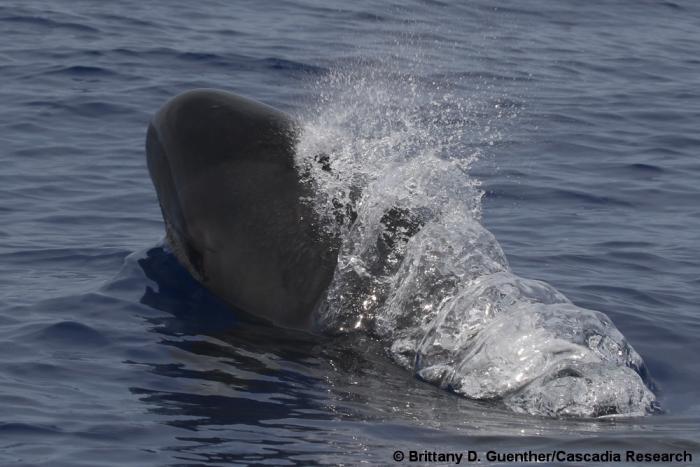
A false killer whale from Cluster 3, seen November 17, 2018. During this encounter we were able to obtain identification photos of all the individuals, obtained one biopsy sample for genetics and hormone chemistry, and collected another breath sample for examination of the respiratory microbiome.
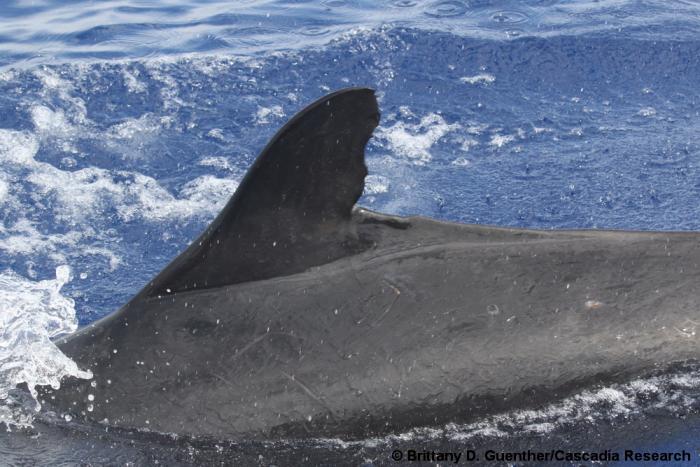
This individual is HIPc301, a very distinctive sub-adult male from Cluster 3, seen November 17, 2018
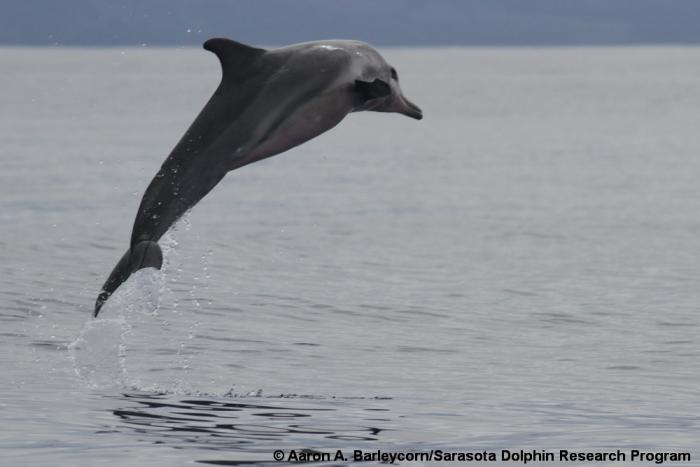
We also encountered our second group of rough-toothed dolphins for the trip, including this individual with an unusual stripe along the side.
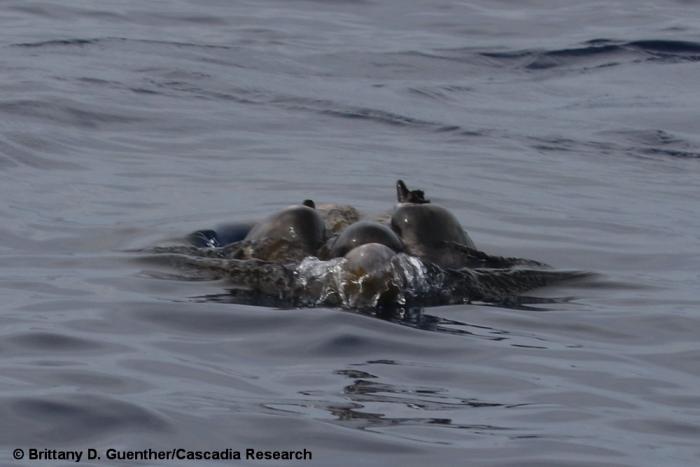
An adult male Blainville’s beaked whale surfacing towards the camera. The two erupted teeth of an adult male are visible, the one on the whale’s left (right side of photo) has some stalked barnacles at the base, while the one on the whale’s right (left side of photo) appears to be partially broken off. We were able to get good identification photos of all the whales in this group, and will be comparing them to our photo-ID catalog for this species. There is a small resident population of Blainville’s beaked whales off this island, so we expect most of the individuals to be in the catalog. Check out our web page for this species for more information.
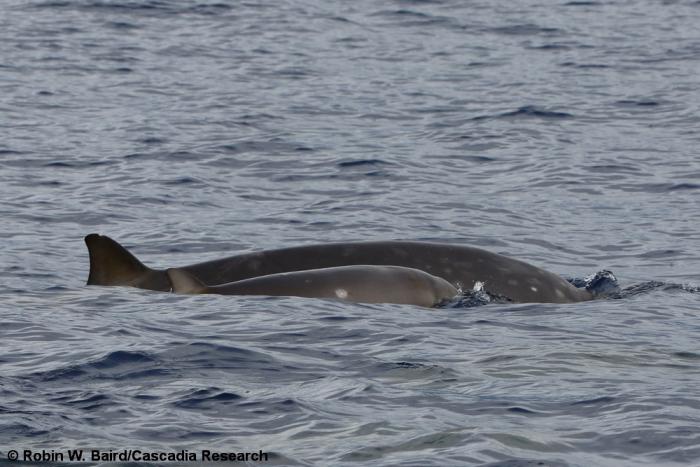
A mother and calf Blainville’s beaked whale, showing the white oval scars caused by cookie-cutter shark bites. The calf is likely older than six months, based on the number and healing state of the scars.
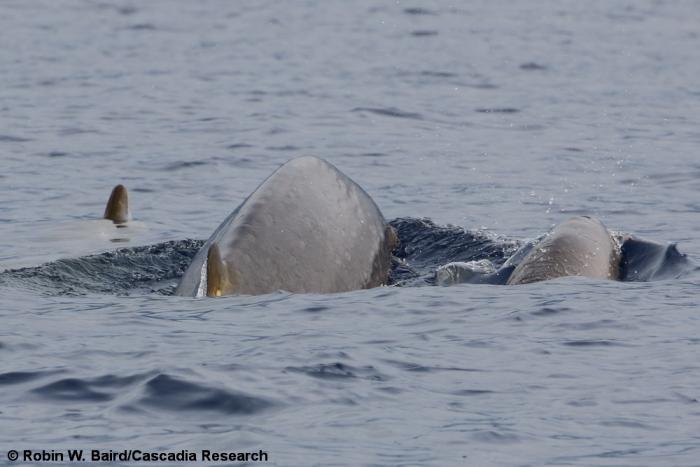
A view from behind of three Blainville’s beaked whales, showing the rostrum just after the whale breaks the surface (left), an adult female showing the typical peaked back of this species (middle), and a calf (right).
November 14th update
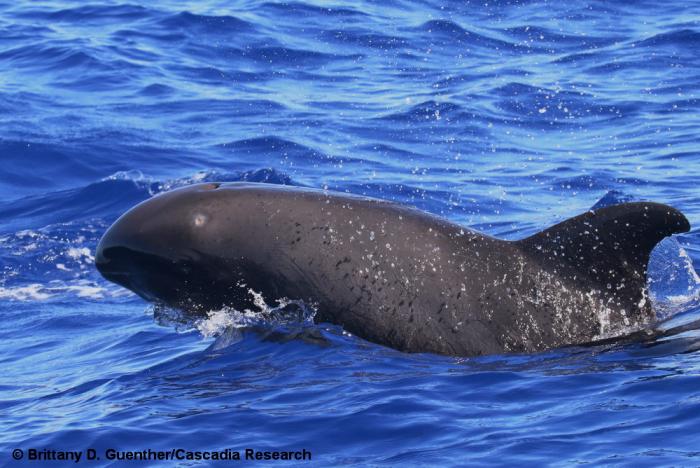
Over the last few days we’ve had encounters with several species of odontocetes (and a few distant sightings of humpback whales), and the highlight was an encounter with the Kohala resident population of melon-headed whales. This is a small population, estimated at about 450 individuals, that has a small home range of the NW side of Hawai’i Island. We were able to get good photos of about 75 individuals (out of an estimated group size of ~150), and collected one skin sample for genetics. The individual above has a mostly-healed wound from a cookie-cutter shark bite on the side of it’s head.
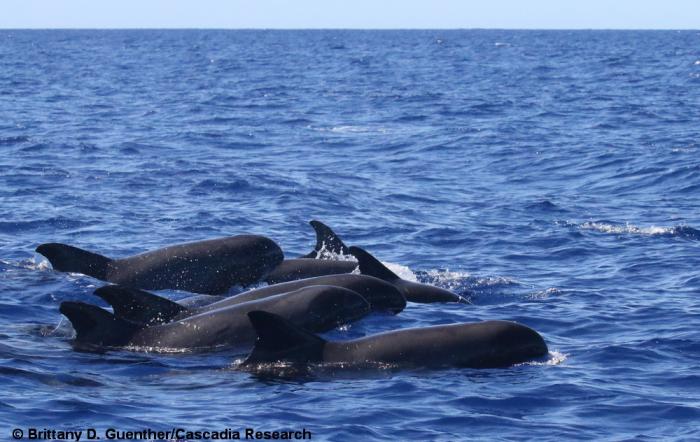
November 8th update
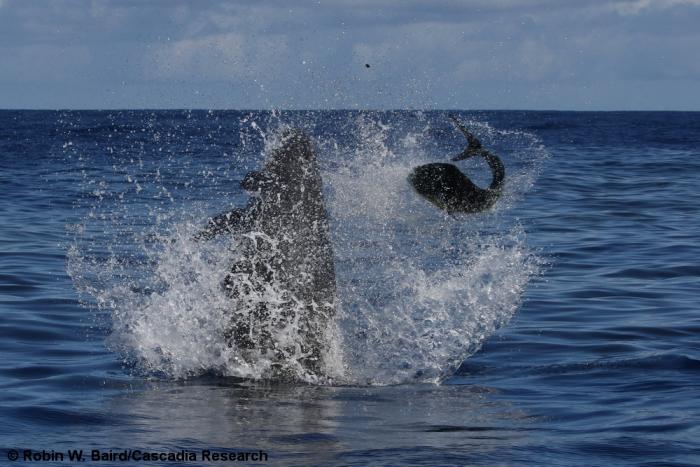
We encountered false killer whales again on November 8th, a spread out group of about seven individuals. This was a very productive encounter – we were able to ID most of the individuals, collected two biopsy samples, and witnessed two predation events on mahimahi.
Drone footage of false killer whales attacking a mahi mahi. Note the cameo by the Oceanic Whitetip Shark!
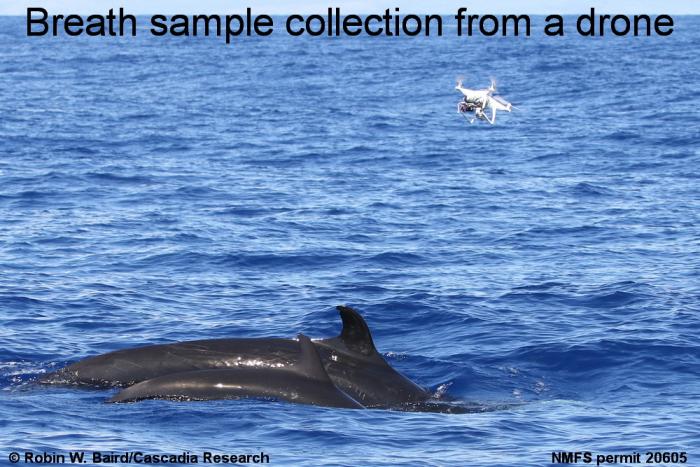
As well the photogrammetry from the drone (measuring individuals to determine length and body condition), we are also collecting breath samples, to examine the respiratory microbiome. These samples will be analyzed by Linda Rhodes at the Northwest Fisheries Science Center. Our NMFS research permit allows for flying drones (UAVs) over animals at a height of 100′, with brief descents to 50′ for photogrammetry, and to 6′ for breath sampling. The photo above shows the drone after it passed through the plume from the exhalation from two false killer whales.
November 7th update
On November 7th we encountered our highest priority species for the trip, the false killer whale. There was a single individual encountered, heading into rough sea conditions, but we were able to get good ID photos of the individual and should be able to match it to our catalog.
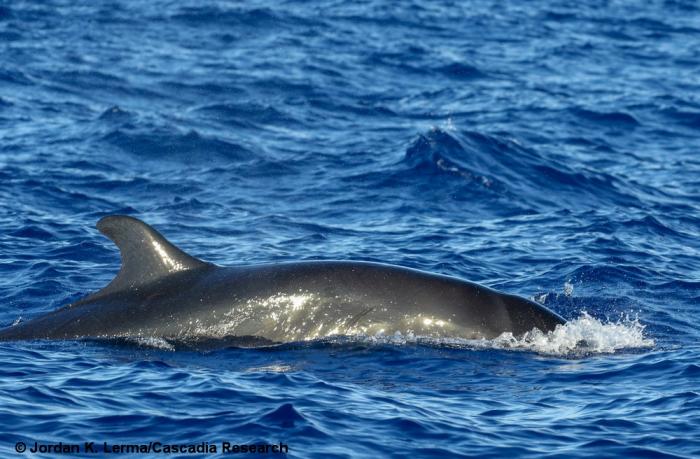
A false killer whale off north Kona, November 7, 2018.
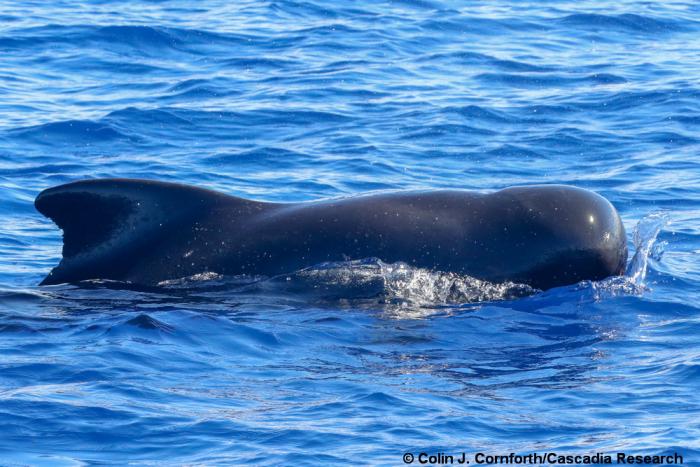
On November 6th we also encountered a group of short-finned pilot whales, including the individual above, and were able to collect one breath sample for analysis of the respiratory microbiome, as well as photos for our photo-ID catalog of this species.
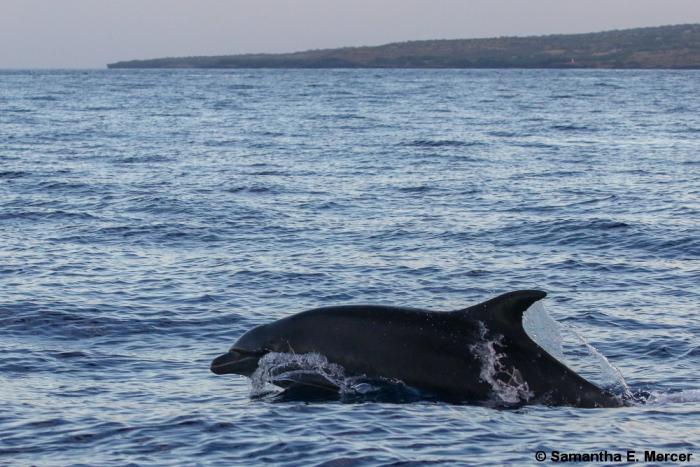
We’ve also encountered a couple of groups of bottlenose dolphins and obtained photos for our photo-ID catalogs.
November 4th update
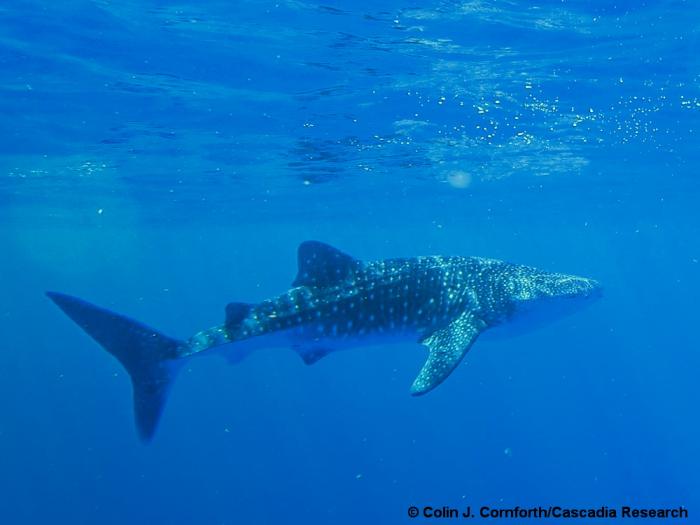
The highlight (for the boat-based crew) of our first day of the project was a juvenile whale shark! We contribute photos of whale sharks to researchers studying this species.While the land-based crew had observations of both bottlenose and spinner dolphins, the boat-based crew had a sighting of a large group of pantropical spotted dolphins, as well as a brief sighting of a pair of dwarf sperm whales.
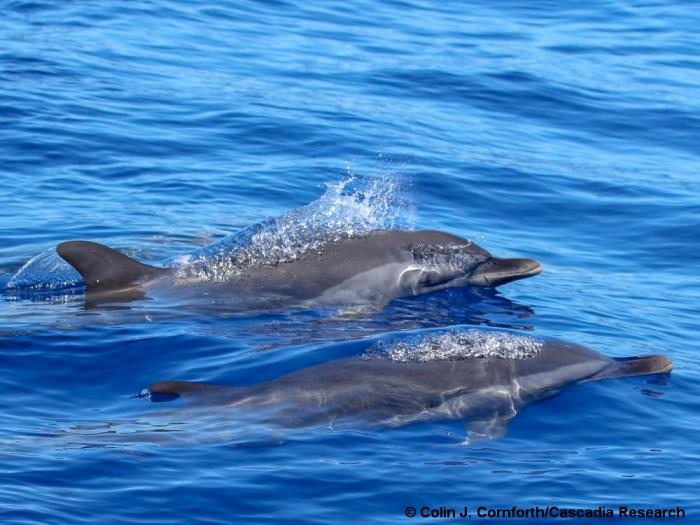
A pair of pantropical spotted dolphins surfacing near the boat, November 4, 2018.
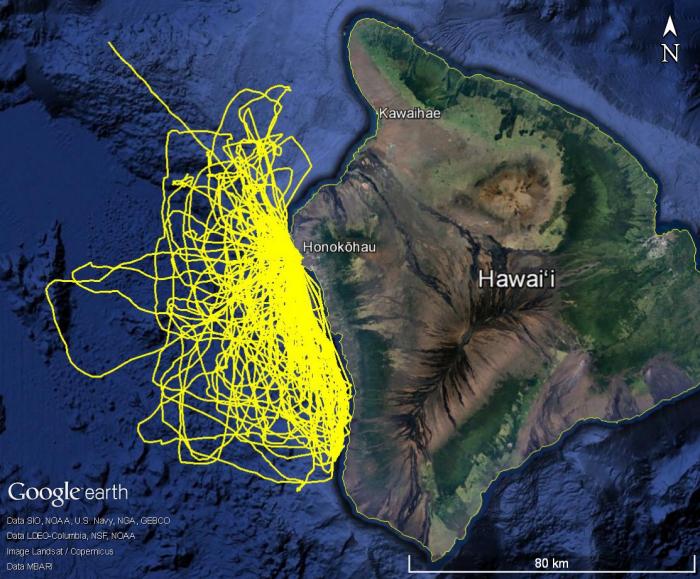
This map shows our vessel tracklines (yellow) for previous field projects during the month of November.
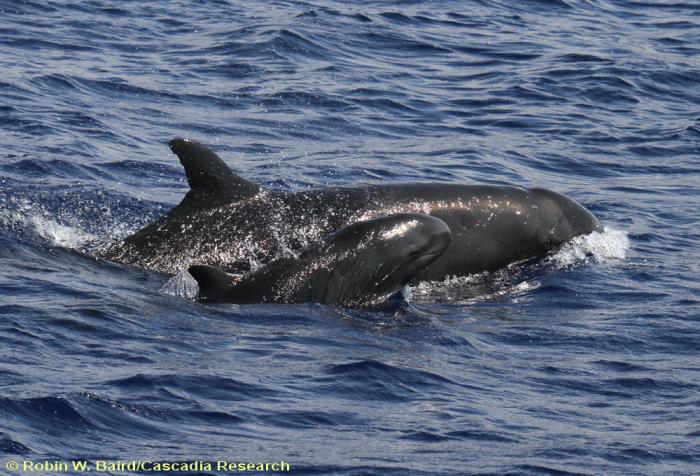
Our primary goal for this project is to work with the endangered main Hawaiian Islands population of false killer whales.
Photos on this page were taken under NMFS Permit No. 20605. Contact Robin Baird (rwbaird “at” cascadiaresearch “dot” org) for more information